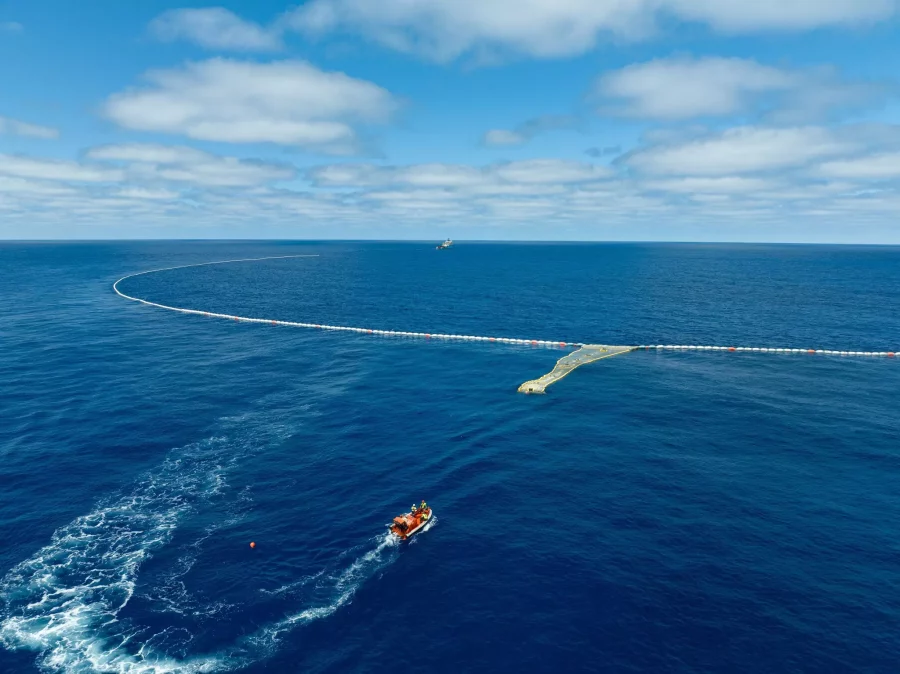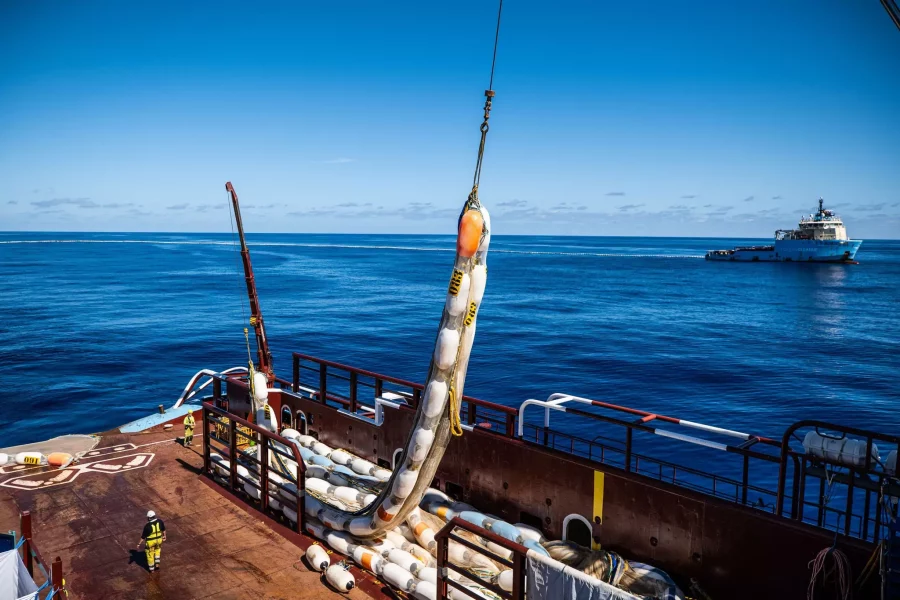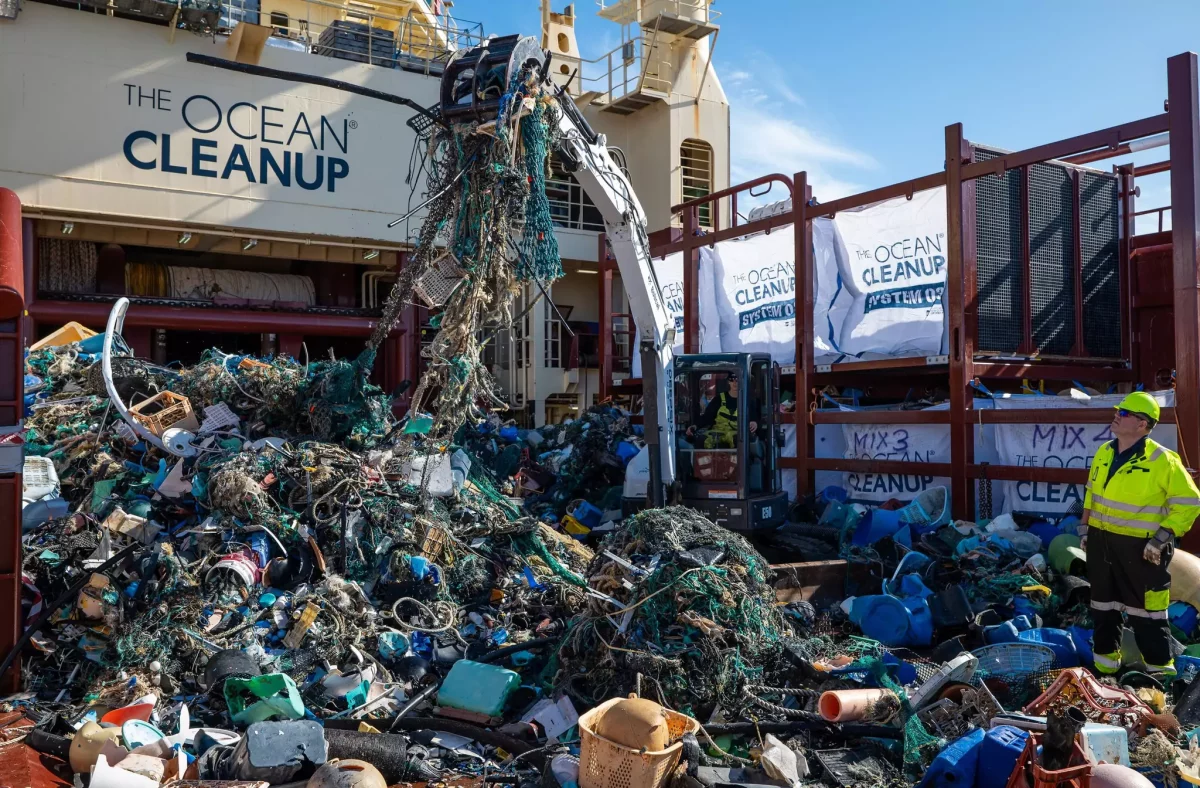After removing more than 275 tonnes of plastic and waste from the Pacific Ocean since 2021, The Ocean Cleanup is now launching a system that can clear waste from an area the size of a football field every five seconds.
The Ocean Cleanup, the organisation that is taking on the mammoth task of eliminating the Great Pacific Garbage Patch, has become world famous for its innovative systems and pioneering approach to mass plastic and waste removal at sea.
After considerable success over the last few years, The Ocean Cleanup is now launching the third generation of its technology: an improved method that is able to remove “much larger quantities of plastic” at lowers costs.
According to the organisation, this latest technique will be 10 times more effective than the previous systems and is paving the way for the creation of a full fleet that will work around the clock to clean up the Pacific Ocean’s plastic problem.

What is the Great Pacific Garbage Patch?
The Great Pacific Garbage Patch is a floating vortex of trash hovering in the north of the Pacific, between California and Japan, with Hawaii in the middle. It spans 1.6 million square kilometres, roughly three times the size of France. It is made up of two main hubs: one in the east and the other in the west. The two are linked together by the North Pacific Subtropical Convergence Zone, which is located a few hundred kilometres north of Hawaii.
Warm waters meet cooler waters in this zone, and together they form a sort of motorway that moves waste from one patch to another.
The new System 03
The Ocean Cleanup’s new technology will reportedly make it possible to eventually clean the entire area with just 10 “teams”, as well as the world’s other three garbage patches in the Indian, North Atlantic and South Atlantic oceans in the future.
The system is simple. It is comprised of a 2.2-kilometre-long floating barrier towed slowly between two vessels. The barrier reaches a depth of four metres below the surface, which is the zone where the majority of waste is to be found. It is then hauled aboard a main vessel where it is sorted for recyclability.

The organisation has even teamed up with automaker Kia, who has agreed to use plastic from the Great Pacific Garbage Patch in the manufacturing of its electric vehicles. The Ocean Cleanup organisation has previously transformed collected waste into a line of sunglasses, which quickly sold out, as a way to using up the plastic it has hauled aboard its vessels.
The Ocean Cleanup has also addressed concerns about the impact its system could have on marine life by incorporating a marine animal safety hatch into System 03. Using underwater cameras, crew members can monitor the site and create an escape route for any animal that finds itself within the clean-up area.
This cost-effective and farther-reaching method has given Dutch CEO Boyan Slat reason to say that he believes that the plastic and debris in 90% of these zones could be gone by 2040.
“By making System 03 so much bigger than our previous efforts, alongside the multiple upgrades we’ve implemented, we can cover a much larger area of ocean in less time and using fewer resources,” reads a communiqué from The Ocean Cleanup. “This brings down our cost per kilogram of plastic removed and maximizes our benefit on the marine environment.”
The Ocean Cleanup has released a fascinating video of the actual work System 03 is doing, comparing the realtime with computer generated images from the design phase. The functioning is almost exactly as was anticipated, and seeing the two videos side by side gives more than a glimmer of hope that this problem is one that truly can be managed.
See the video for yourself:
Make sure you’re never left out of the conversation.
Sign up for the Monaco Life newsletter, and follow us on Facebook, Twitter, Instagram and LinkedIn.
Photo source: The Ocean Cleanup, Facebook
